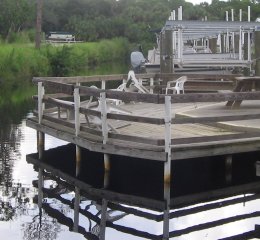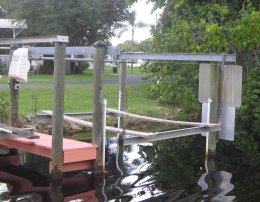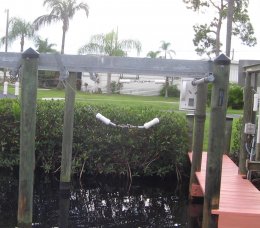"Mr. Luddite" wrote in message news:***@giganews.com...
"Wayne.B" wrote in message news:***@4ax.com...
===
All of the first class dock builders around here use driven pilings.
They typically go in about 10 ft to the "resistance" point, certainly
not bedrock since I don't think we have any. The bargain basement
builders jet them in, typically to about 6 ft or so. It stands to
reason, simple mechanics actually, that 10 ft gives you a much larger
fulcrum, ie, a stronger dock. Our trawler is about 50 ft and 70,000
lbs with a lot of superstructure. I needed a dock that would hold it
in 100 kt winds, over 10,000 lbs of force.
---------------------------------
One thing that struck me about many of the private dockages in Florida
(on the east coast anyway) was that they were located on channels off
of the ICW and near the owner's home.
In the event of a hurricane it seems like you have two choices .... a
haul out well in advance or reliance on the dock structure to secure
and protect the boats. Maybe the surrounding houses and buildings
provide some protection from the strongest winds, I don't know.
In our area in the north, leaving your boat in a slip or dockage in a
hurricane isn't recommended. More damage occurs do to the wind and
storm surge smashing the boat against the dock. We used to submit a
"hurricane plan" every year up here defining what advance action we
desired in the event of a hurricane. In my case, my first choice
was a haul out followed by moving my boat from it's slip to an
available mooring in the harbor.
Fortunately, hurricanes up here are far and few between but I've
witnessed serious damage and even a sinking that occurred due to a
strong nor'easter. The boats and floating docks get out of sync and
hulls get smashed.
----------------------------
"due to" versus "do to". Getting dumber as the years go by.


